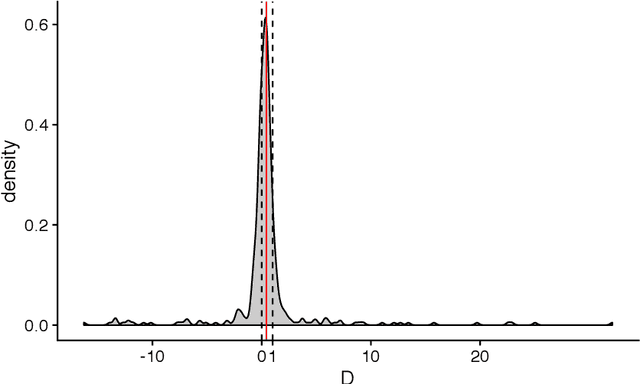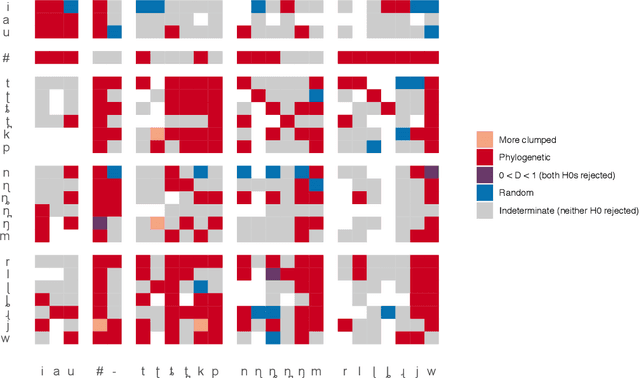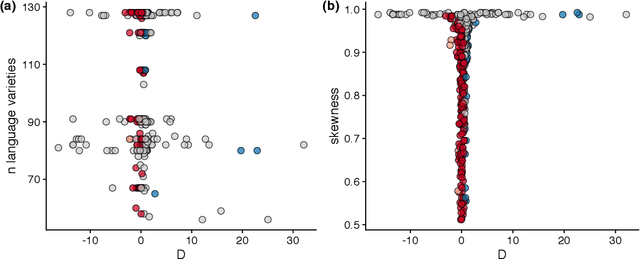Phylogenetic signal in phonotactics
Paper and Code
Feb 03, 2020



Phylogenetic methods have broad potential in linguistics beyond tree inference. Here, we show how a phylogenetic approach opens the possibility of gaining historical insights from entirely new kinds of linguistic data--in this instance, statistical phonotactics. We extract phonotactic data from 128 Pama-Nyungan vocabularies and apply tests for phylogenetic signal, quantifying the degree to which the data reflect phylogenetic history. We test three datasets: (1) binary variables recording the presence or absence of biphones (two-segment sequences) in a lexicon (2) frequencies of transitions between segments, and (3) frequencies of transitions between natural sound classes. Australian languages have been characterised as having a high degree of phonotactic homogeneity. Nevertheless, we detect phylogenetic signal in all datasets. Phylogenetic signal is higher in finer-grained frequency data than in binary data, and highest in natural-class-based data. These results demonstrate the viability of employing a new source of readily extractable data in historical and comparative linguistics.
 Add to Chrome
Add to Chrome Add to Firefox
Add to Firefox Add to Edge
Add to Edge